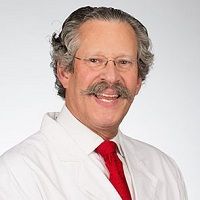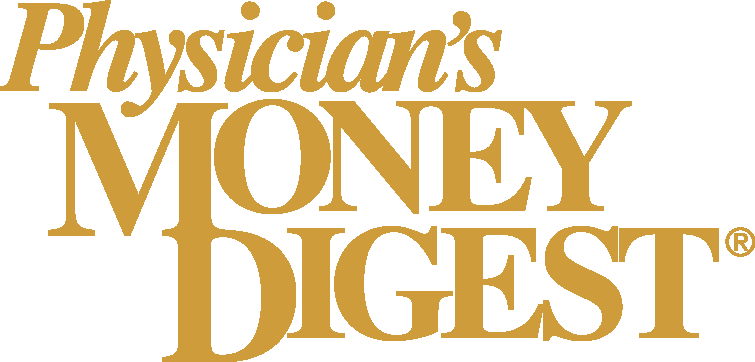Article
Neurosurgeon Keeps Things Light While Doing Serious Work
Author(s):
When it comes to practicing medicine, Bruce Zablow, MD, says he's an outlier; much more Hawkeye Pierce from M.A.S.H. than Marcus Welby.

When it comes to practicing medicine, Bruce Zablow, MD, says he’s an outlier; much more Hawkeye Pierce from M.A.S.H. than Marcus Welby.
He has a propensity for wearing funky T-shirts under his scrubs, and will often listen to music by the Eagles or Dire Straits while performing surgery.
“I listen to all kinds of stuff while I’m operating,” says the neurointerventional surgeon with North Jersey Brain & Spine Center. “Most people have this idea that you go into the operating room and it’s dead silence. But while I’m operating, I’m just trying to relax.”
Unconventional? Perhaps, but with more than 35 years of experience under his belt, Zablow has definitely found what works for him.
A Different Drum
Being unorthodox seems to be Zablow’s way. Forging a career in medicine wasn’t exactly planned. Following a stint in the Navy during the Vietnam conflict, Zablow returned to college to complete his undergraduate degree.
“Having spent a few years of my life not doing anything very productive being in the Navy, I figured it was time to get things done.”
But upon returning to college he learned that he didn’t have enough credits in any one concentration for a specific major.
So he asked the dean, “What am I closest to that I can do with minimal disruption on my part?”
He was told he needed two courses to obtain a graduate with a degree in molecular biology.
“Well, that sounds pretty sexy,” Zablow recalls thinking. “But what am I going to do with it?”
That question was answered, at least in part, when Zablow decided that going to graduate school and becoming a teaching assistant wasn’t very appealing. He opted to apply to medical school, but getting in was no easy task.
“It was tough getting into medical school because people were using it as a way to get draft deferred,” Zablow says, referencing the military draft lottery of the late 1960s and early 1970s. “And it’s not like it was a lifelong interest on my part because when I was in high school it just wasn’t realistic. I didn’t have the type of economic situation where somebody was going to underwrite my 10 years of college and medical school. But I had good grades, and I got in.”
It Is Brain Surgery
It was during his surgical internship that Zablow was exposed to neurosurgery, which he found extremely interesting but also quite depressing.
“We didn’t have the kind of technology that’s around today,” he explains. “It wasn’t even on the horizon. There was no such thing as an MRI. Neurosurgery was a diagnostic surgery in the sense you had to do invasive things just to figure out what was wrong. And then there was the surgical side trying to fix things. So it was very interesting, but it was a scary specialty because a lot of patients didn’t do well.”
But soon technology began to evolve. The Cleveland Clinic, Zablow recalls, was one of the first facilities to have a CT scanner.
“That was a game changer,” he says. “And at the time it hadn’t even been applied to other parts of the body, just the brain. And that got me interested in vascular problems like aneurisms and vascular malformations. That really became my interest.”
That interest has since grown into a defined subspecialty, almost a multidisciplinary type of specialty, Zablow says. “People are coming into it from three different directions. They’re coming into it from neurosurgery, they’re coming into it from radiology, and they’re coming into it from neurology. It’s now becoming the standard of care for strokes.”
Surveying the Landscape
By his own admission, Zablow is an outlier.
“I think that in general, a lot of medicine takes itself very seriously,” he says. “Maybe a little too seriously.”
That doesn’t mean Zablow is lost on the seriousness of the work he does. He just recognizes that there’s also a human side to the job.
“I’m sort of a product of the ‘60s,” he admits. “When I was in medical school and surgical training, everything was white collar, white coats, and striped ties. Everything was pressed neat and formal. That’s not really where most things are today.”
Where Zablow can often be found when he’s not in surgery is working as an amateur landscape designer—just one of his many eclectic hobbies and interests outside the operating room.
“In a way it’s more than design,” he says. “It’s designing, but then it’s also doing all the planting and yard work. It’s sort of like construction work for people who want to be outside. I spend so much of my life indoors that I really enjoy being outside. And it’s better than paying someone to do it.”
Time to Slow Down
Zablow acknowledges that there will come a time when he’ll need to ease up on 80-hour work weeks, which is why he dabbles in landscaping and enjoys traveling.
“I don’t see myself playing golf,” he laughs. “So I have these other things that I’m sort of interested in.”
But for now he still gets a great deal of satisfaction from his medical career.
“A lot of the vascular work I do are really serious emergencies,” he says. “You’re dealing with people who can live or die. Especially with the brain aneurism stuff. If something’s done in the first couple of hours you can actually return them to a high level of functioning. I find that particularly rewarding.”
And still, he keeps it all in perspective.
“I guess the expression is, if you can make your profession your avocation, then you’re lucky,” Zablow says. “And in a way, I’ve spent an awful lot of years doing just that. It’s almost like a hobby.”











